- Home
- Jackie French
Gold graves and glory
Gold graves and glory Read online
GOLD, GRAVES
AND GLORY
1850 – 1880
Jackie French
Illustrations and cartoons by
Peter Sheehan
CONTENTS
Cover
Title Page
Author’s Note: A Small Part of a Big Story
Chapter 1: Australia, 1850
Chapter 2: Hargraves Finds Gold—Or Does He?
Chapter 3: Come to Australia!
Chapter 4: Life on the Early Goldfields
Chapter 5: The Eureka Stockade
Chapter 6: The Chinese Come to New Gold Mountain
Chapter 7: Bushrangers and Selectors
Chapter 8: The Indigenous Nations are Devastated
Chapter 9: A New Image for Van Diemen’s Land
Chapter 10: The New State in the North
Chapter 11: Western Australia
Chapter 12: A Different Sort of Gold for South Australia
Chapter 13: Kidnappers and Camels
Chapter 14: Australia, 1880
Conclusion
How to Convert Imperial Measurements to Metric
Recommended Reading for Gold, Graves and Glory
Index
Copyright
AUTHOR’S NOTE
A SMALL PART OF A BIG STORY
History isn’t just about what happened in the past; it’s about why it happened—and what happened next.
This book is just a small part of a big story. You’ll find the rest of the story in the other books of this series.
Book 1: Shipwrecks, Sailors and Sixty Thousand Years tells the story of the Australian Aboriginal nations and the ships from many countries that came looking for riches or adventure in the southern oceans centuries ago.
Book 2: Grim Crims and Convicts tells of the crazy scheme to send a colony of convicts across the world … and what happened when they got there.
Book 3: Rotters and Squatters tells how the new settlers explored the land they’d come to, and how farms took over from convict prisons.
Book 4: Well—read on!
PS Keep a look out for further instalments in the fascinating history of Australia!
THE ROARING DAYS
The night too quickly passes
And we are growing old,
So let us fill our glasses
And toast the Days of Gold;
When finds of wondrous treasure
Set all the South ablaze,
And you and I were faithful mates
All through the roaring days.
—HENRY LAWSON, 1889
CHAPTER 1
AUSTRALIA, 1850
The colonies were in a mess.
For years most of the work had been done by convicts. But now Britain wasn’t going to send out any more of her crims to the eastern states, though some were still being sent to Western Australia.
Who was going to do the dirty work now?
Australia was still very much part of the British Empire—even if England was half a world away. For the past twenty years Britain had been sending out her poor, too. If they were respectable and looked like being good workers, they didn’t even have to pay their ‘passage money’ on a ship to get here.
But there were closer places for the poor to go, like the United States or even South Africa. And, without ships bringing convicts, there weren’t enough ships to take back the colonies’ wool and wheat to Europe.
Now there were no more convicts, it was hard to get servants or farm workers or anyone to build roads or to do the other hard, dirty work.
LIFE IN THE 1850S
Most farm work was done by hand—guiding the plough behind cattle or bullocks, scattering seed, cutting hay or wheat.
Housework was hard, too. Most women made their own bread and butter. They filled the lamps with oil (there was no electric light) and educated their kids themselves, as there were few schools and they were certainly not for the poor. Most kids had to spend their days working, just like adults, and many didn’t get any education at all, because their parents couldn’t read or write very well. Many kids died young from diseases such as whooping cough, measles, diphtheria and scarlet fever.
All cooking was done on a wood stove, or in a pot or frying pan directly over a fire. Few houses had any sort of oven. There were no chainsaws—all the wood for cooking had to be chopped and split by hand. In the towns water was delivered in barrels—but was often muddy or stinking. And outside the towns, farm people hauled water from creeks or wells, which could dry up completely in a drought.
In the early 1850s, one quarter of all deaths in Ballarat were of babies.
Whether they were doing housework or not, women’s clothes were cumbersome and often got in the way. Fashionable women in the 1850s wore such wide crinolines that it was hard to get through a doorway.
Servants and poorer farmers’ wives didn’t wear crinolines, unless they had a second-hand one for their rare Sundays off. Farmers’ wives faced loneliness, death and disease and even childbirth a long way from medical help, and often a diet of mostly meat and damper. Their uncomfortable clothes were the least of their worries!
UNDER COVER
Kids in the 1850s could play hide and seek under their mothers’ skirts!
And a crinoline was useful if you wanted to go to the toilet in town. There were no public toilets … but no-one could see what went on under all that material! And women in 1850 didn’t wear pants, either.
The colonies had been in trouble all through the 1840s. People had borrowed too much money to buy too many sheep and cattle on too much land.
When the price of wool and wheat went down in Europe, many farmers went broke. The colonial governments had made most of their money by selling the vast stretches of unoccupied land—so the government was pretty broke too, as few people were able to buy land.
Of course the Indigenous nations had been custodians of the land for tens of thousands of years. But the colonial governments had decided that they didn’t have any right to sell their land, or even stay there if someone else wanted it for a farm.
How could the colonial governments pay for people to come to Australia now? It was going to take something really big to get people to sail to such a far off place.
And then it happened.
CHAPTER 2
HARGRAVES FINDS GOLD—OR DOES HE?
Edward Hargraves was an Australian who led a small group to the Californian gold rush in 1849. He learnt how to pan gold there—and also learnt what gold-bearing country looked like.
He didn’t find much gold in California. But he thought the Californian goldfields looked a lot like the land he knew in New South Wales.
He was sure he’d find gold there.
He sailed back to New South Wales and in 1851 told the Inspector General of Police that he was going to find gold.
The Inspector General was not impressed. It was a ‘wild and unprofitable undertaking’, he said.
No-one else was impressed either. They thought this big, wild man was mad.
But Hargraves was determined. He didn’t even visit his family in Gosford to say he was home. On 5 February 1851, he dashed off over the Blue Mountains, down onto the Bathurst plains—and immediately found gold!
Hargraves was enormous—tall and, at 18 stone, heavily built.
He’d been a sailor and had worked in a pub and a store.
Or did he?
That was the story Hargraves told and later put into a book. What he didn’t say was that he dashed over the Blue Mountains to Guyong, halfway between Bathurst and Orange, and found John Lister, who had already discovered gold there in the 1840s.
But no-one had been interested. Minerals such as coal belonged to the government—and the
government hadn’t wanted to do anything about it.
Lister led Hargraves to the junction of Lewis Ponds Creek and Summer Hill Creek, where he’d found gold before. Hargraves dipped his pan into the gravel and sand of the creek, swished the water around, tipped it out and there were a few specks of gold left!
Hargraves, Lister, a farmer named James Tom, and his brothers William and Henry, panned about £13 worth of gold. Hargraves raced back to Sydney to show it to the Colonial Secretary.
But the government wasn’t sure that it wanted a gold rush. As it was, there weren’t enough people to do all the jobs, now that the transportation of convicts had effectively stopped. Who’d look after the sheep, plant the wheat and build the houses, if everyone rushed off to find gold?
There already wasn’t enough money to pay for enough police and surveyors. How would the government cope if boatloads of gold seekers arrived?
But Hargraves wasn’t going to shut up about the gold—and he wanted a reward, too.
The Colonial Secretary sent a geologist, Samuel Stutchbury, to check out Hargraves’s claim. But even before Stutchbury had made his report, Hargraves told the Sydney Morning Herald all about his gold.
Word was out!
Hargraves got his reward of £10 000. And the Victorian government chipped in £5000. But he only ever got a bit over £2000 before the funds were frozen, when James Tom objected. Hargraves was ripping them off. They had been the first to discover the gold, but he had claimed the glory.
The new goldfield was called ‘Ophir’, after the place in the Bible where King Solomon found gold, which he brought back to Israel.
GOLD! GOLD! GOLD!
The colonies went gold crazy.
Passages on sailing boats to California were cancelled. Clerks and labourers didn’t turn up for work. Ladies coming down to breakfast found the servants had dashed off to find gold.
WHAT ABOUT HASGRAVES?
Hargraves was made Commissioner of Crown Lands, which earned him another £10 000. But he never gave any of it to Lister or the Toms. They took Hargraves to court, but he won.
In fact Ophir didn’t have as much gold as everyone had hoped. Mobs of unsuccessful prospectors attacked Hargraves as they came back to Sydney with empty pockets.
But it didn’t matter. Australia had suddenly become gold mad. A fortune in gold had to be there—somewhere! And once people really started looking, they found it.
Within four months, more than 1000 prospectors had raced to Ophir.
The first gold was ‘panned’—or washed out of creeks and from the sandbanks along the rivers. As the surface deposits of gold ran out, prospectors had to dig for gold—at first by the creeks and rivers, where past floods had washed the ‘alluvial’ gold and it lay buried, and later where ancient rivers or glaciers might have dropped it.
About 20 tons of gold was panned in New South Wales in 1852.
HOW ABOUT VICTORIA?
So many people were rushing to New South Wales to find gold that the Victorian authorities were keen to demonstrate their independence and offered a reward of £200 for any gold found within 200 miles of Melbourne. Victoria had become independent of New South Wales in 1851, and they were keen to boost their own image and wealth.
William Campbell claimed that he had discovered gold in Victoria in 1850—before Hargraves claimed to have discovered it in New South Wales. But Campbell didn’t announce his discovery until 1851—so who knows if it was true! In 1851, six months after people began flocking to Ophir, gold was officially discovered at Warrandyte, then Clunes and Buninyong near Ballarat, and soon at Bendigo Creek, too.
When Victoria became an independent colony in 1851 it had 77 000 people. By 1853, the population was 540 000—mostly men!
But first of all, the eager miners had to get there. In the 1850s that wasn’t easy.
CHAPTER 3
COME TO AUSTRALIA!
The rest of the world went gold crazy, too, as the news spread overseas. Suddenly more ships than ever before were sailing for Australia, laden with gold-hungry prospectors from England, Europe, China, the United States and New Zealand. They weren’t just the poor who’d come to Australia in the past few decades, or the younger sons of rich farmers looking for cheap land, either. There were sailors, tailors, young aristocrats out for adventure, teachers, coachmen, cooks.
And it was all for gold.
NO PLACE LIKE HOME
Not many women came looking for gold, though some accompanied their husbands. In those days respectable women didn’t just go off adventuring by themselves. And even most wives of gold seekers stayed home to look after their families, hoping their men would be able to send them back some money to live on.
In 1852 alone, 370 000 immigrants arrived in Australia.
The new immigrants had to eat and buy clothes and pans—and later they might need a house and other goods.
The economy boomed!
GOLD DIGGERS
The newcomers were soon referred to as ‘diggers’, and soon any bloke on the goldfields would be called a digger, or yell out to his friends, ‘Hey, digger!’ or even, ‘Dig’. (Years later the Australian soldiers digging trenches at Gallipoli would call themselves ‘diggers’ too.)
Diggers came from many different countries round the world, but most of them were from the United Kingdom. Between 1852 and 1860, 290 000 of them came to Victoria. Fewer than 15 000 came from other European countries and 18 000 from the United States in the same period.
In 1861, 29 per cent of the population were Australian-born, 60 per cent were from the United Kingdom and 11 per cent were from other parts of the world.
But the biggest group from a ‘foreign’ country (in other words, not English-speaking) were the 40 000 Chinese.
TRAVELLING TO AUSTRALIA
It was a long, hard journey across the world to get to Australia—even in the efficient new clipper ships, which took only about two and a half months, instead of the six or nine months it took the older-style sailing ships. The clippers carried gold back to Europe, the United States and China faster, too.
Things were still pretty rough on board. Most passengers were herded into two big areas—one for the few women and the other for men. Richer passengers got a cabin of their own, but it was only about six feet by ten feet, with a hard, narrow bed, a porthole and lantern if they were lucky.
If there were women in the cabin, a chamber pot was included (men had to go over the side) and there was a damp space on the floor to put a trunk or cabin bag. Most of the luggage went down in the hold and the passengers couldn’t get anything out of it till they landed. They just had to hope that their belongings weren’t ruined by salt water seeping into the ship, or gnawed by the rats that swarmed over everything.
NO GIRLS!
Most of the diggers were men. And, most of the convicts had been men. Despite the arrival of free settlers over a forty-year period, men now outnumbered women more than ever before.
Rich passengers took servants along to look after them, although the servants had to travel with the poor passengers. The rich also took luxuries to eat on the voyage, such as dried fruit, plum puddings, portable lemonade made with sugar and powdered lemon rind—or even a cow for its milk!
The poorer passengers had to get out of bed at 7 a.m., and roll up their bedding and sweep and wash the living area before breakfast. If the weather was calm and the cook could light a fire in the galley, breakfast was usually a sort of porridge made from oatmeal or ship’s biscuit—which was a hard, dry and often weevil-infested slab—cooked in water. But if the weather was too rough for a fire, all the passengers had was cold food.
The main meal was at midday. It might be salt meat and dried pea stew, and there would be more biscuit for supper at night, with smelly butter or ancient cheese if they were lucky. Everyone had to be in bed by 10 p.m. Beds were usually bunks or hammocks. Passengers had to be clean and tidy for the captain’s inspection, and they were not to swear, gamble or fight.
Do
ctors checked all passengers before they came on board. But it was easy to miss someone who was just coming down with an illness, and the cramped conditions meant that cholera, whooping cough, typhoid or tuberculosis could easily sweep through people living so close together.
Each colony had its own flag to fly when a new ship came into the harbour, to tell people that there might be letters from home.
There was no vaccination for illnesses such as tuberculosis and there were no antibiotics to cure them. Many people died from conditions that are hardly seen in wealthy countries today.
DOG’S BREAKFAST
Kids had to have their hair cut off before they sailed, to make sure they didn’t bring nits or fleas on board. Kids only got half the adult food ration, too.
EEEEEWWW!
Port Phillip Bay was the nearest port to the early Victorian goldfields, so Melbourne was the first city most new diggers saw.
It was a town of mud or dust, flies, wild dogs, drunk men—and lots of pongs. All along the banks, slaughterhouses spilled muck and guts into the river, as animals were killed for their meat or hides, and tallow for soap and candles.
Stray dogs roamed the streets, feasting on the leftovers—and pet dogs joined them. Men carried guns or tomahawks in their belts—and most seemed to be drunk. The sound of gunfire or brawling rang in the streets every night.
Melbourne was only clean when it flooded and sudden rivers in the streets washed away the dog and horse droppings.
But at the same time the streets were wide and well planned; there were schools, theatres, comfortable hotels and fashionable suburbs such as St Kilda and Brighton, with fine houses and servants to bring afternoon tea in silver teapots.

 Christmas Lilies
Christmas Lilies The Lily in the Snow
The Lily in the Snow The Schoolmaster's Daughter
The Schoolmaster's Daughter Christmas in Paris
Christmas in Paris Lilies, Lies and Love
Lilies, Lies and Love The Last Dingo Summer
The Last Dingo Summer Legends of the Lost Lilies
Legends of the Lost Lilies Just a Girl
Just a Girl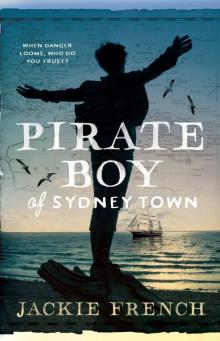 Pirate Boy of Sydney Town
Pirate Boy of Sydney Town Night Ride into Danger
Night Ride into Danger The Secret of the Youngest Rebel
The Secret of the Youngest Rebel My Name is Not Peaseblossom
My Name is Not Peaseblossom Goodbye, Mr Hitler
Goodbye, Mr Hitler Somewhere around the Corner
Somewhere around the Corner Dingo: The Dog Who Conquered a Continent
Dingo: The Dog Who Conquered a Continent Facing the Flame
Facing the Flame Dark Wind Blowing
Dark Wind Blowing Pennies For Hitler
Pennies For Hitler They Came On Viking Ships
They Came On Viking Ships To Love a Sunburnt Country
To Love a Sunburnt Country The Ghost of Howlers Beach
The Ghost of Howlers Beach The Girl from Snowy River
The Girl from Snowy River Phredde and the Purple Pyramid
Phredde and the Purple Pyramid The Secret of the Black Bushranger
The Secret of the Black Bushranger I Am Juliet
I Am Juliet Barney and the Secret of the French Spies
Barney and the Secret of the French Spies Miss Lily’s Lovely Ladies
Miss Lily’s Lovely Ladies Nanberry
Nanberry A Waltz for Matilda
A Waltz for Matilda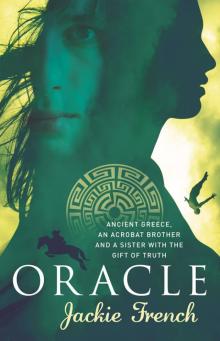 Oracle
Oracle Rain Stones 25th Anniversary Edition
Rain Stones 25th Anniversary Edition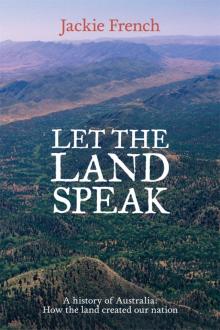 Let the Land Speak
Let the Land Speak Barney and the Secret of the Whales
Barney and the Secret of the Whales The Phredde Collection
The Phredde Collection Year in the Valley
Year in the Valley A Rose for the Anzac Boys
A Rose for the Anzac Boys The Ghost by the Billabong
The Ghost by the Billabong The Lily and the Rose
The Lily and the Rose Lessons for a Werewolf Warrior
Lessons for a Werewolf Warrior The Night They Stormed Eureka
The Night They Stormed Eureka Gold graves and glory
Gold graves and glory If Blood Should Stain the Wattle
If Blood Should Stain the Wattle The Book of Horses and Unicorns
The Book of Horses and Unicorns Ophelia
Ophelia Walking the Boundaries
Walking the Boundaries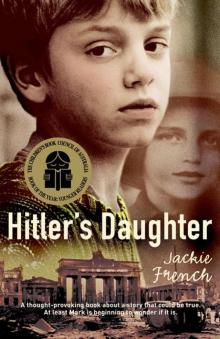 Hitler's Daughter
Hitler's Daughter Missing You, Love Sara
Missing You, Love Sara Macbeth and Son
Macbeth and Son Wonderfully Wacky Families
Wonderfully Wacky Families Pharaoh
Pharaoh Dance of the Deadly Dinosaurs
Dance of the Deadly Dinosaurs The Horse Who Bit a Bushranger
The Horse Who Bit a Bushranger One Big Wacky Family
One Big Wacky Family The Animal Stars Collection
The Animal Stars Collection Refuge
Refuge Third Witch
Third Witch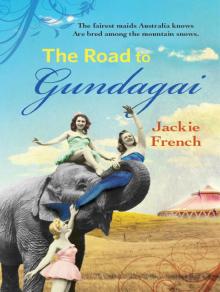 Down the Road to Gundagai
Down the Road to Gundagai